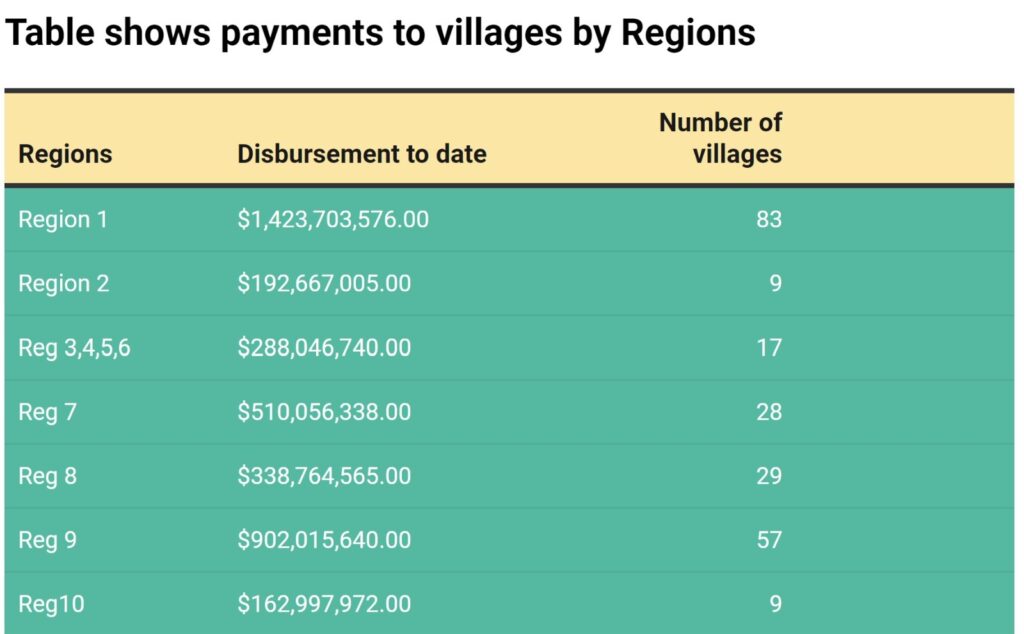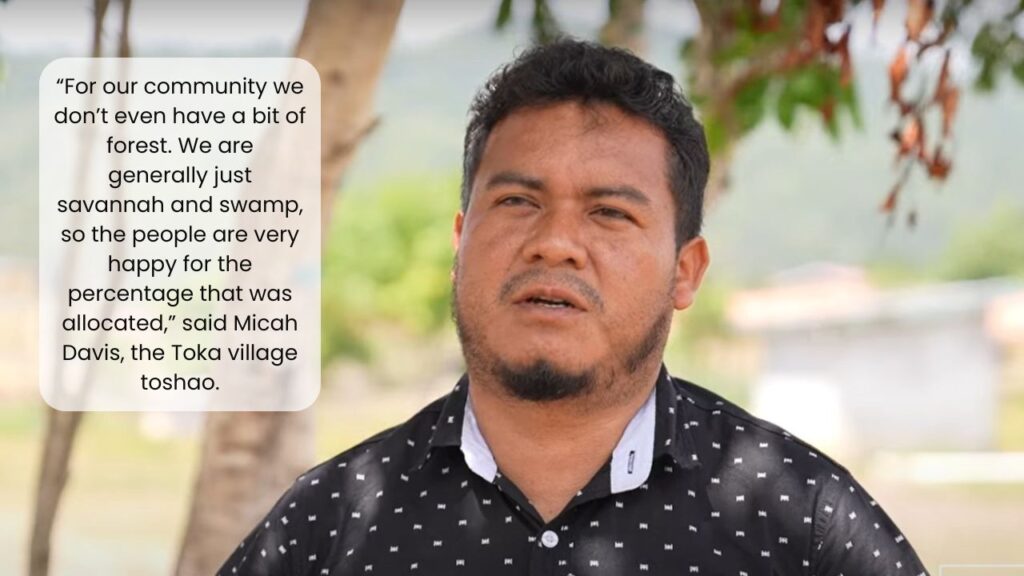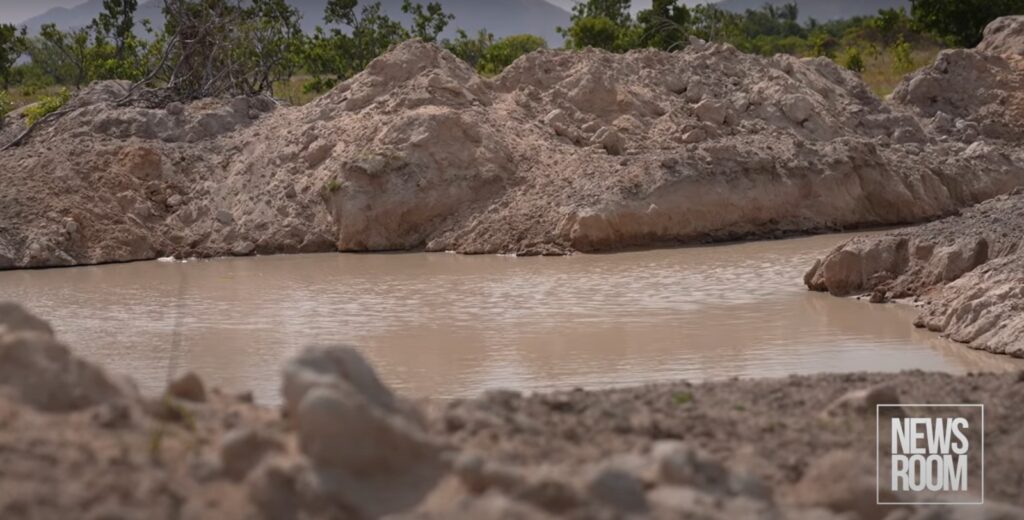
Carbon credit funds: Billions paid to indigenous villagers. How have they spent it?
By Neil Marks
Guyana’s pioneering Low Carbon Development Strategy (LCDS), first put forward in 2009, set out how the country – and other countries in the world – can significantly grow the economy while keeping forests intact.
The second phase of that LCDS, called LCDS 2030, outlines the nation’s roadmap for sustaining its commitment to preventing deforestation while achieving a five-fold growth of its economy.
One of the objectives of LCDS 2030 is to invest in indigenous villages across the country – regardless of their size, their location and whether or not they have forests.
For years, Guyana worked on a mechanism to monitor, report and verify the carbon stored in its trees and that amounted to over 19 gigatons.
Under an international mechanism called ART TREES, credits are issued based on the carbon stored in forests.
Guyana entered the voluntary carbon market in 2022 wherein countries or companies can invest in environmental actions that compensate for the harmful carbon their operations emit into the atmosphere.
The American oil firm Hess Corporation decided to buy 1/3 of the carbon credits issued to Guyana at a cost of USD$750 million.
The government decided that 15% of all funds would go to indigenous communities. The National Toshaos Council, which is made up of all Toshaos or village leaders, agreed with this.
Over the last year, $3.8B in payment were made to 232 indigenous communities.

How have they spent the money? We travelled to the North Rupununi to find out.
Kwatamang strives for food security
It was in the late 1940s that a Wapichan woman made her way to Annai to build a home for her family of four. She was directed the area that is now called Kwatamang, named after black spider monkeys in the area.
From the $15 million earmarked for the village, the community has decided to work on food security through agricultural projects.
“Sometimes we may run short of food (when) we don’t have cassava. We might run out of vegetables. That’s the reason for focusing on agriculture,” said Vivian Moses, the local village leader.
Naturally, a cassava farm is one of the projects which were identified for funding. And it makes sense since cassava figures in the staple diet of the people of Kwatamang and has a variety of uses such as to make cassava bread, farine, tapioca and cassareep.
The cassava farm Kwatamang has invested in is located miles away from the residential area to prevent animals disturbing the farm.
A portion of land was cleared for the farm and young people from the area have found employment.

Closer to the village, one of the two sites identified for a vegetable farm, which will help to support the school feeding programme and for individuals’ homes.
“We see it as one of needs – for vegetables. When we do have vegetables, we get it from Lethem (miles away) and it’s not fresh,” said Marlyn Browne, who helps to lead the LCDS projects in Kwatamang.
It’s not that villagers don’t plant their own kitchen gardens, she says. Villagers plant for their own families and to share to others, but sometimes supplies are not adequate.
Getting vegetables for the children is of utmost importance.
With other funding, the village plans to expand the community’s cattle rearing project, both as a means of ensuring adequate supplies of beef for the village and to sell to nearby villagers.
Beef in these parts is demanding, especially for riverain areas, like Rewa, Apoteri and Crashwater, where they do fishing.
“Sometimes we run short of their demands,” Moses explained.
To support its agriculture ventures, Kwatamang has also bought a canter to transport the produce, and it is also rented out to others and this serves as an income for the village.

The forest payments Kwatamang has received is because of the push by the government to ensure economic benefits for conserving the rainforests which traps and stores harmful greenhouse gases, such as carbon dioxide, which damage the environment and cause claustrophic weather events like wildfires and floods, which Kwatamng is all too familiar with.
“The rich countries want our country to keep our forests standing to ‘take down’ (sequester) the carbon being emitted, so Guyana’s forest has the potential to help the world,” says Moses.
Fair View – maintaining a legacy of forest conservation
The indigenous village of Fair View sits in some of the most pristine rainforests in the world and ancient rock carvings reveal that Guyana’s First People inhabited the territory thousands of years ago.
Fair View’s legacy lies in using the rainforest in a sustainable way and now the village is receiving payments from revenue Guyana is earning because it has kept the forest intact.
Fair View is the only village you will find within the Iwokrama forest at the heart of Guyana.
Ancient petroglyphs tells us that they lived here thousands of years ago.

It’s situated near the Iwokrama International Centre where the focus is on demonstrating sustainable use of the rainforest – basically keep the forest alive while earning from it.
Fair Veiw is committed to that principle and revenue Guyana is earning because it has kept most of its forest intact is helping it stay true to that mission.
“The natural resources that we have and how unique this thing is for us, rather than us destroying it or clear cutting it, it is important that we preserve some of it,” says Bradford Allicok, the village leader.
It was at Fair View in 2009 that Guyana and Norway signed a forest-saving deal that was the highlight of the historic first phase of the LCDS.
Fair View values the commitment by the government to use funds earned because of safeguarding the forests to benefit indigenous communities.
“Not Fair View alone, but all the Amerindian communities in Guyana – it is important for every one of us.
“…we know we can get money year come, year goes.
“And that helps to build the economy of communities.
“Because we have funds coming that we can embark on project that would build a community and bring jobs to communities, so it is very important,” said Allicock.
Communities which are paid from the revenue earned form the sale of carbon credits, determine how the money will be used based on their needs.
“We had consultations. We had a village meeting and we selected the priority projects we need.”

Because of the transportation needs, the villagers decided to use their funds to buy a minibus.
Allicock explained that for one child to travel to the Annai Secondary School, it cost $5,000. And at one point the village had 60 children. And so the cost was very unsustainable.
“It was very expensive for us as villagers. The villagers decided to put forward this proposal to get a bus to transport children to and fro,” said Allicock.
One of the projects Fair View is also pursuing is fixing up an old Bedford truck, and there is good reason.
“We have projects within the community and we will use it as a cargo truck – much more easier that fetching it on our shoulders.”
The village hopes that as it avoids deforestation, eco-tourism will thrive here, and that’s another avenue being supported by payments from Gyana’s scheme to sell carbon credits.
Toka and the excavator creating a buzz
Scorching temperatures in the North Rupununi present significant challenges for indigenous communities reliant on farming. Without a constant water supply, their main source of livelihood would dry up.
But villagers of Toka thought of a way out – a mini excavator, which is used to dig water catchment areas – to feed agriculture projects.

And it is generating significant interest in the North Rupununi who are battling this period of drought; many communities are requesting use of the excavator to undertake similar projects.
The projects at Toka were decided on by the villages.
“So we were able to identify the projects that are really needed.
“We have ventured into those (agricultural) projects, because we want to secure food for people in the community. We cannot predict what the weather would be like, so we tried to capture the main thing – which is water.
Toka’s story is unique in another way – it doesn’t have any forests but is benefiting from carbon credits issued to Guyana because its forests trap harmful carbon dioxide, one of the gases causing the planet to warm.

The funds are available to all communities – regardless of their size or location, and whether they have forests or not.
“For our community we don’t even have a bit of forest. We are generally just savannah and swamp, so the people are very happy for the percentage that was allocated.,” said Micah Davis, the village toshao.
The villages of Kwatamang, Fair View and Toka, along with other indigenous villages will soon begin receiving payments for this year.




